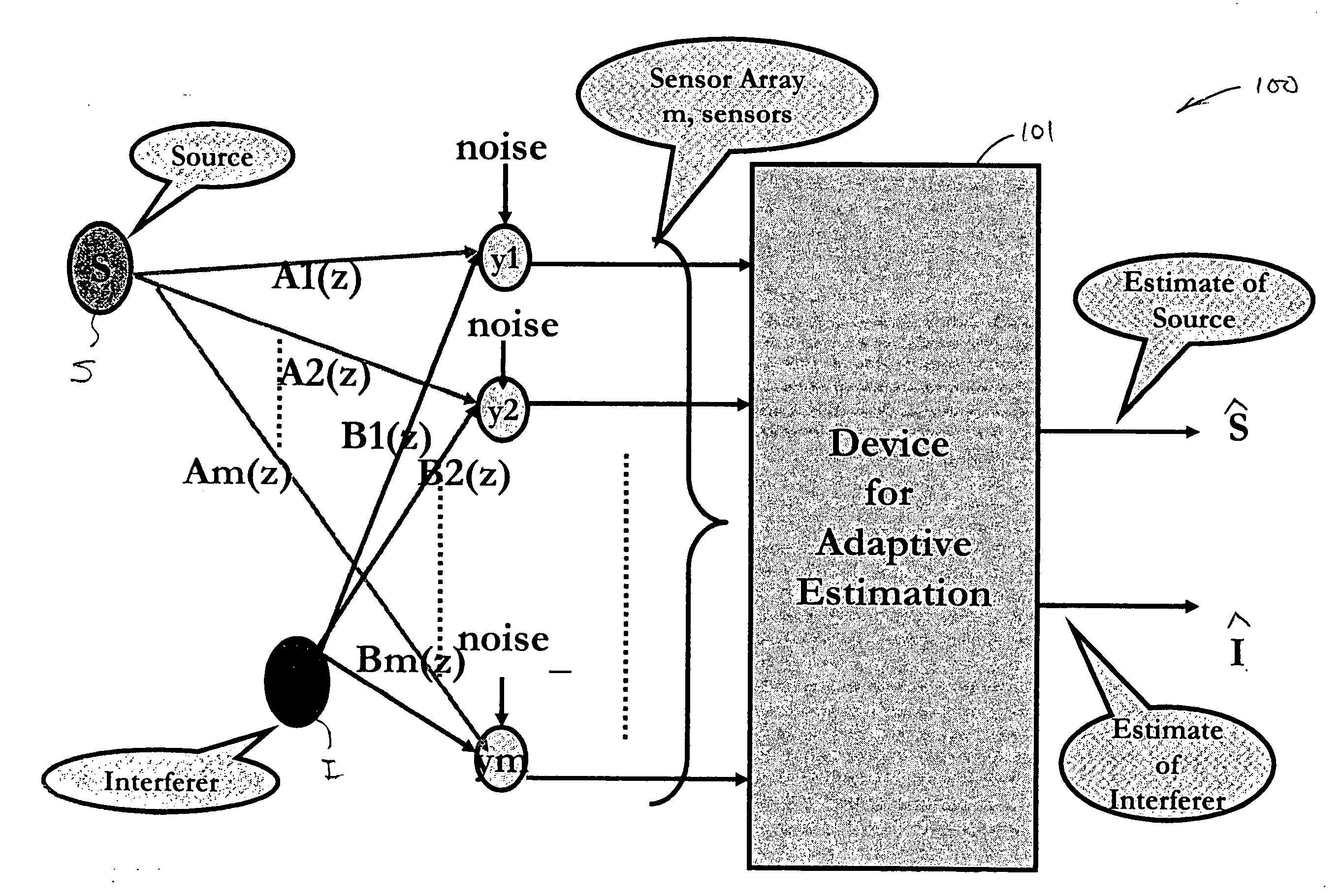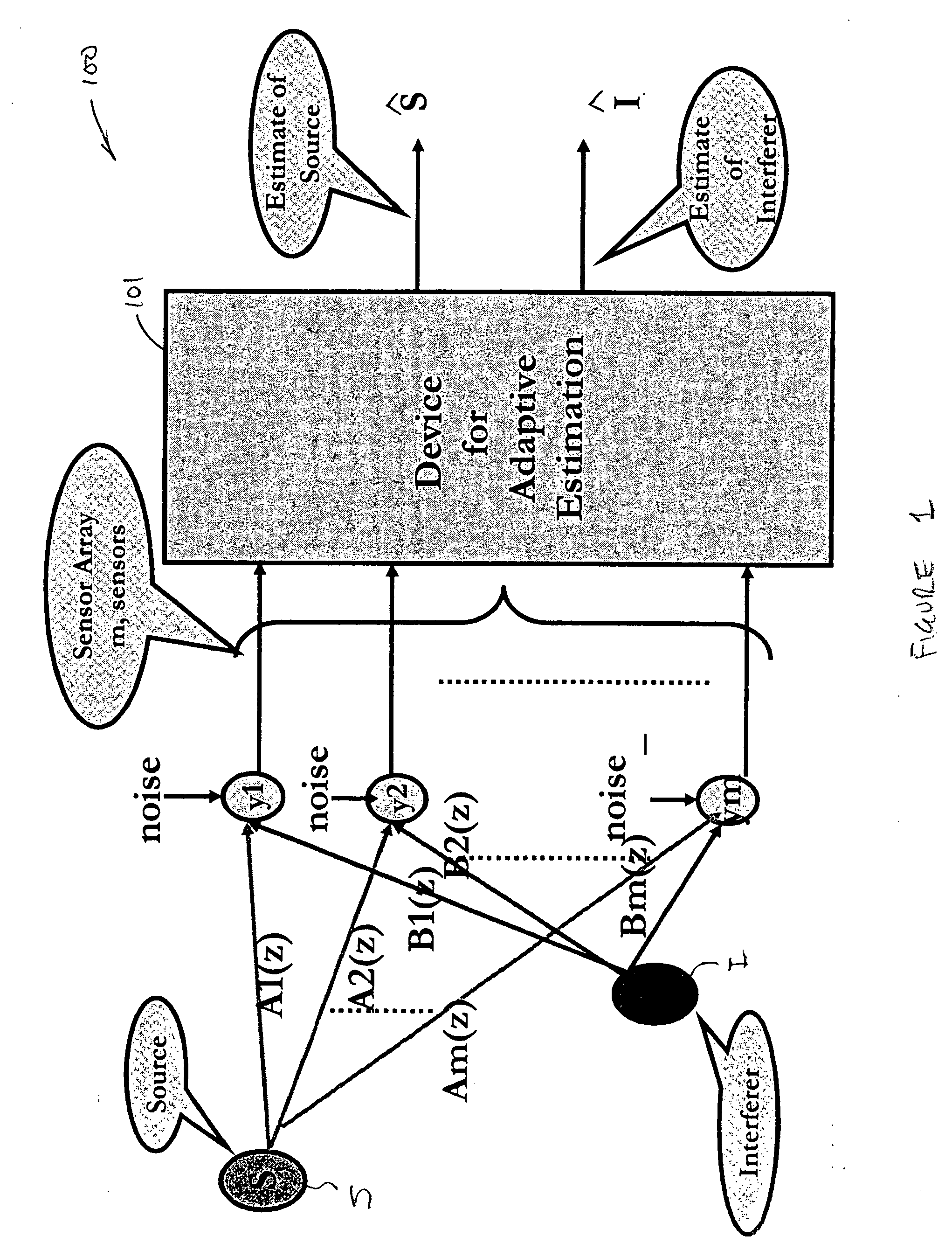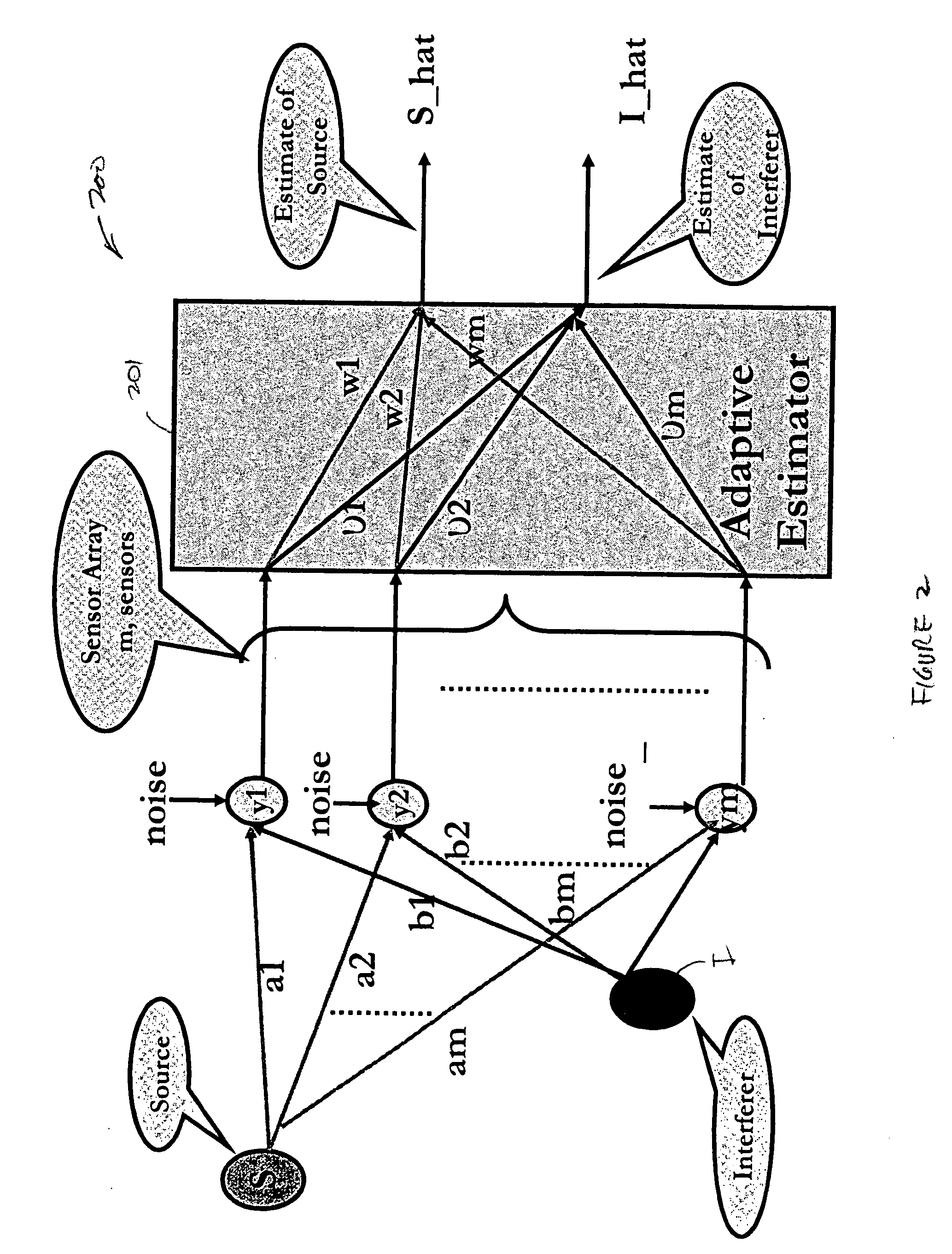Method for signal estimation and extraction
a signal estimation and signal processing technology, applied in pulse manipulation, pulse technique, instruments, etc., can solve the problem that the computational power of digital signal processors is not enough to take advantage of the computational power provided by digital signal processors
- Summary
- Abstract
- Description
- Claims
- Application Information
AI Technical Summary
Benefits of technology
Problems solved by technology
Method used
Image
Examples
Embodiment Construction
[0019] The present invention provides a method for separating a signal source from sources of noise and interference.
[0020]FIG. 1 is model 100 representing a typical problem in a signal processing application. As shown in FIG. 1, model 100 includes desirable signal source S, undesirable interferer I, an array of sensors ym (e.g., microphones) and background electrical noise (acoustic noise is included in interferer I). In this model, each sensor yi receives the signals from sources S and I arriving at the sensor as Ai(z) and Bi(z), which include signals arriving directly and indirectly from all signal paths. The indirect signal paths (“multipaths”) result from signal reflections due to the particular acoustical environment. The signals received at the sensors experience different delays because of the different paths. Thus, in FIG. 1, for example, the value of signal I received at sensor y2 may therefore be represented by the function B2(z). Similarly, the value of signal S receive...
PUM
 Login to View More
Login to View More Abstract
Description
Claims
Application Information
 Login to View More
Login to View More - R&D
- Intellectual Property
- Life Sciences
- Materials
- Tech Scout
- Unparalleled Data Quality
- Higher Quality Content
- 60% Fewer Hallucinations
Browse by: Latest US Patents, China's latest patents, Technical Efficacy Thesaurus, Application Domain, Technology Topic, Popular Technical Reports.
© 2025 PatSnap. All rights reserved.Legal|Privacy policy|Modern Slavery Act Transparency Statement|Sitemap|About US| Contact US: help@patsnap.com



